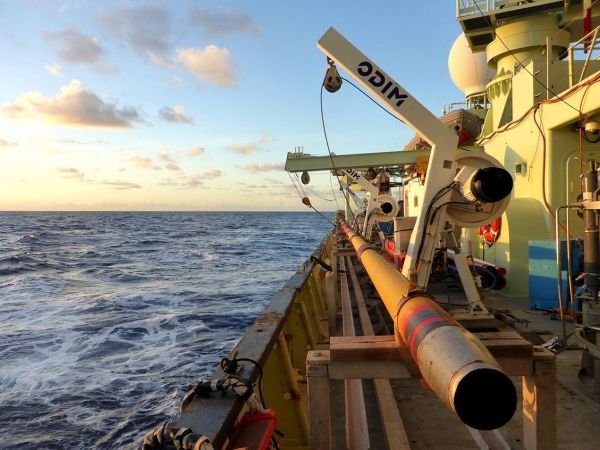Far below the ocean floor, sediments are teeming with bizarre zombie-like microbes. Although they’re technically alive, they grow in slow motion, and can take decades for a single cell to divide—something their cousins at the surface do in a matter of minutes. A new study from the Woods Hole Oceanographic Institution (WHOI) is beginning to pick apart how they survive by examining their source of “food”—nearby molecules of organic carbon. The study helps further our understanding of the limitations of life on Earth and could help inform how life might exist on other planets.
In a paper published in the January 21 issue of the journal Nature Geoscience, WHOI scientists examined long core samples taken aboard the R/V Knorr and R/V Revelle in the middle of the north Atlantic and south Pacific oceans. By analyzing the core’s sediments using high intensity X-rays, the researchers found that they contained low levels of organic carbon molecules—bits of ancient proteins from long-dead organisms—preserved in sediment up to 25 million years old.
Under normal circumstances, carbon like this would be snatched up quickly by microbes. There’s not a lot of it out there in deep mid-ocean sediments of the Atlantic and Pacific, making them tough places for microorganisms to survive. Any bacteria that stumbled across it would be treated to a tiny feast. But for some reason, the microbes nearby aren’t taking full advantage of this windfall.
Read more at Woods Hole Oceanographic Institution
Photo: The long-corer system shown aboard the R/V Knorr. The longer the cores, the deeper they go, collecting older sediments that record past conditions and events in the planet’s oceans and climate. CREDIT: Kevin King


